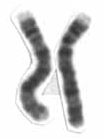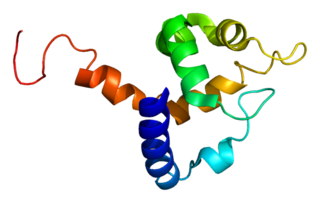| FAM47E-STBD1 | |||||||||||||||||||||||||||||||||||||||||||||||||||
|---|---|---|---|---|---|---|---|---|---|---|---|---|---|---|---|---|---|---|---|---|---|---|---|---|---|---|---|---|---|---|---|---|---|---|---|---|---|---|---|---|---|---|---|---|---|---|---|---|---|---|---|
| Identifiers | |||||||||||||||||||||||||||||||||||||||||||||||||||
| Aliases | FAM47E-STBD1 , FAM47E-STBD1 readthrough, FAM47E | ||||||||||||||||||||||||||||||||||||||||||||||||||
| External IDs | GeneCards: FAM47E-STBD1 | ||||||||||||||||||||||||||||||||||||||||||||||||||
| |||||||||||||||||||||||||||||||||||||||||||||||||||
| |||||||||||||||||||||||||||||||||||||||||||||||||||
| |||||||||||||||||||||||||||||||||||||||||||||||||||
| |||||||||||||||||||||||||||||||||||||||||||||||||||
| Wikidata | |||||||||||||||||||||||||||||||||||||||||||||||||||
| |||||||||||||||||||||||||||||||||||||||||||||||||||
FAM47E-STBD1 readthrough is a protein that in humans is encoded by the FAM47E-STBD1 gene. [3]
| FAM47E-STBD1 | |||||||||||||||||||||||||||||||||||||||||||||||||||
|---|---|---|---|---|---|---|---|---|---|---|---|---|---|---|---|---|---|---|---|---|---|---|---|---|---|---|---|---|---|---|---|---|---|---|---|---|---|---|---|---|---|---|---|---|---|---|---|---|---|---|---|
| Identifiers | |||||||||||||||||||||||||||||||||||||||||||||||||||
| Aliases | FAM47E-STBD1 , FAM47E-STBD1 readthrough, FAM47E | ||||||||||||||||||||||||||||||||||||||||||||||||||
| External IDs | GeneCards: FAM47E-STBD1 | ||||||||||||||||||||||||||||||||||||||||||||||||||
| |||||||||||||||||||||||||||||||||||||||||||||||||||
| |||||||||||||||||||||||||||||||||||||||||||||||||||
| |||||||||||||||||||||||||||||||||||||||||||||||||||
| |||||||||||||||||||||||||||||||||||||||||||||||||||
| Wikidata | |||||||||||||||||||||||||||||||||||||||||||||||||||
| |||||||||||||||||||||||||||||||||||||||||||||||||||
FAM47E-STBD1 readthrough is a protein that in humans is encoded by the FAM47E-STBD1 gene. [3]
This locus represents naturally occurring read-through transcription between the neighboring FAM47E (family with sequence similarity 47, member E) and STBD1 (starch binding domain 1) genes on chromosome 4. The read-through transcript encodes a protein that shares sequence identity with the upstream gene product but its C-terminal region is distinct due to frameshifts relative to the downstream gene. [3]

The human genome is a complete set of nucleic acid sequences for humans, encoded as DNA within the 23 chromosome pairs in cell nuclei and in a small DNA molecule found within individual mitochondria. These are usually treated separately as the nuclear genome and the mitochondrial genome. Human genomes include both protein-coding DNA sequences and various types of DNA that does not encode proteins. The latter is a diverse category that includes DNA coding for non-translated RNA, such as that for ribosomal RNA, transfer RNA, ribozymes, small nuclear RNAs, and several types of regulatory RNAs. It also includes promoters and their associated gene-regulatory elements, DNA playing structural and replicatory roles, such as scaffolding regions, telomeres, centromeres, and origins of replication, plus large numbers of transposable elements, inserted viral DNA, non-functional pseudogenes and simple, highly repetitive sequences. Introns make up a large percentage of non-coding DNA. Some of this non-coding DNA is non-functional junk DNA, such as pseudogenes, but there is no firm consensus on the total amount of junk DNA.

In genetics and bioinformatics, a single-nucleotide polymorphism is a germline substitution of a single nucleotide at a specific position in the genome that is present in a sufficiently large fraction of considered population.

Chromosome 4 is one of the 23 pairs of chromosomes in humans. People normally have two copies of this chromosome. Chromosome 4 spans more than 193 million base pairs and represents between 6 and 6.5 percent of the total DNA in cells.

Leucine-rich repeat kinase 2 (LRRK2), also known as dardarin and PARK8, is a large, multifunctional kinase enzyme that in humans is encoded by the LRRK2 gene. LRRK2 is a member of the leucine-rich repeat kinase family. Variants of this gene are associated with an increased risk of Parkinson's disease and Crohn's disease.

Natural resistance-associated macrophage protein 1 is a protein that in humans is encoded by the SLC11A1 gene.

Whirlin is a protein that in humans is encoded by the DFNB31 gene.

Parkin coregulated gene protein is a protein that in humans is encoded by the PACRG gene.

Protocadherin 11 X-linked, also known as PCDH11X, is a protein which in humans is encoded by the PCDH11X gene.

Autophagy related 16 like 1 is a protein that in humans is encoded by the ATG16L1 gene. This protein is characterized as a subunit of the autophagy-related ATG12-ATG5/ATG16 complex and is essentially important for the LC3 (ATG8) lipidation and autophagosome formation. This complex localizes to the membrane and is released just before or after autophagosome completion.

AT-rich interactive domain-containing protein 5B is a protein that in humans is encoded by the ARID5B gene.

Putative Polycomb group protein ASXL1 is a protein that in humans is encoded by the ASXL1 gene.

Solute carrier family 2, facilitated glucose transporter member 9 is a protein that in humans is encoded by the SLC2A9 gene.

NADH dehydrogenase [ubiquinone] 1 alpha subcomplex assembly factor 3, also known as 2P1, E3-3, or C3orf60, is a protein that in humans is encoded by the NDUFAF3 gene. NDUFAF3 is a mitochondrial assembly protein involved in the assembly of NADH dehydrogenase (ubiquinone) also known as complex I, which is located in the mitochondrial inner membrane and is the largest of the five complexes of the electron transport chain. Mutations in this gene have been associated with severe complex I deficiency and Leigh syndrome.

Ubiquinone biosynthesis protein COQ9, mitochondrial, also known as coenzyme Q9 homolog (COQ9), is a protein that in humans is encoded by the COQ9 gene.

PR domain zinc finger protein 9 is a protein that in humans is encoded by the PRDM9 gene. PRDM9 is responsible for positioning recombination hotspots during meiosis by binding a DNA sequence motif encoded in its zinc finger domain. PRDM9 is the only speciation gene found so far in mammals, and is one of the fastest evolving genes in the genome.

BPI fold containing family A, member 3 (BPIFA3) is a protein that in humans is encoded by the BPIFA3 gene. The gene is also known as SPLUNC3 and C20orf71 in humans and the orthologous gene in mice is 1700058C13Rik. There are multiple variants of the BPIFA3 projected to be a secreted protein. It is very highly expressed in testis with little or no expression in other tissues. The Human Protein Atlas project and Mouse ENCODE Consortium report RNA-Seq expression at RPKM levels of 29.1 for human testis and 69.4 for mouse, but 0 for all other tissues. Similarly, the Bgee consortium, using multiple techniques in addition to RNA-Seq, reports a relative Expression Score of 95.8 out of 100 for testis and 99.0 for sperm in humans; however low levels of BPIFA3 between 20 and 30 were seen for a variety of tissues such as muscle, glands, prostate, nervous system, and skin.

Tonsoku-like, DNA repair protein is a protein that in humans is encoded by the TONSL gene.

Leucine rich repeat and Ig domain containing 2 is a protein that in humans is encoded by the LINGO2 gene.

ADAM metallopeptidase with thrombospondin type 1 motif, 17 is a protein that in humans is encoded by the ADAMTS17 gene.

FAM227B is a protein that in humans is encoded by FAM227B gene. FAM227B stands for family with sequence similarity 227 member B and encodes protein FAM227B of the same name. Its aliases include C15orf33, MGC57432 and FLJ23800.
This article incorporates text from the United States National Library of Medicine, which is in the public domain.